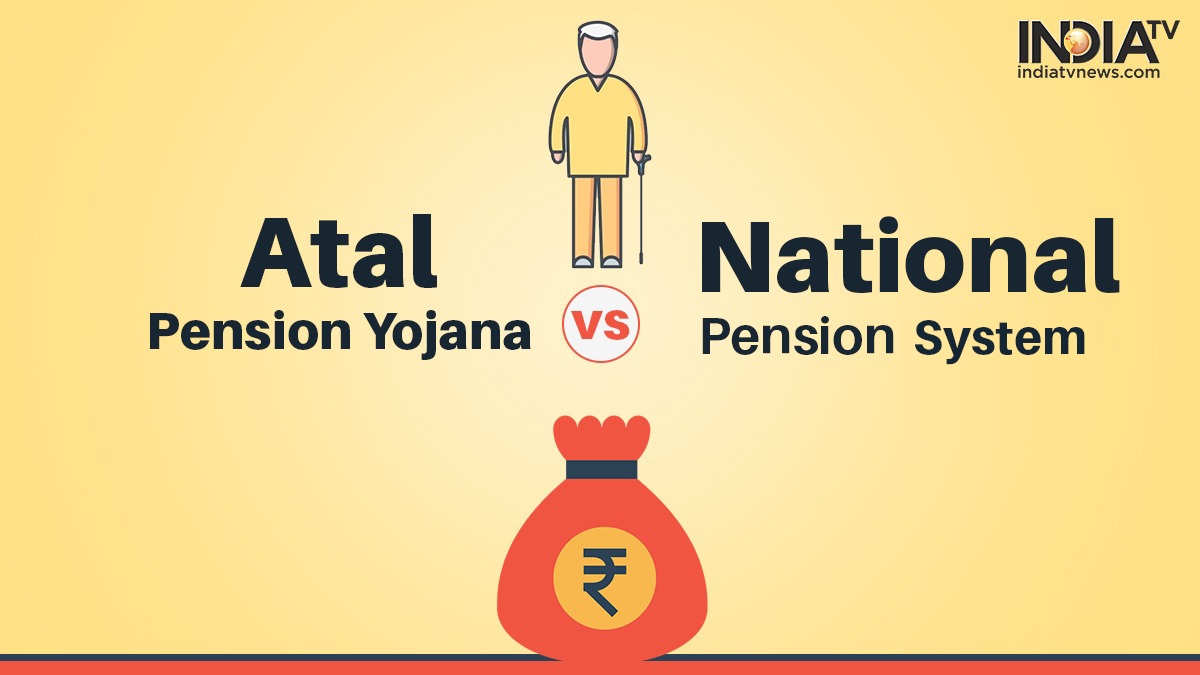When we hear the word "pension", the first thing that comes to mind is guaranteed income after retirement. It simply means an amount paid to a retired employee or others at regular intervals. The government and several private companies offer pension schemes and choosing the right one is a tough task. The two hugely popular schemes are -- National Pension System (NPS) and Atal Pension Yojana (APY). Both are government-run schemes and promise maximum benefits.
Anyone can enroll in these schemes. While the NPS was launched in 2004 by the Atal Bihari Vajpayee government, the APY was introduced by the Modi government in 2015 that focuses mainly on the unorganised sector. Those contributing to the APY and NPS can avail additional tax benefit under section 80 CCC and 80CCD. But what makes these two pension schemes look different from each other. Let's understand the difference here:
NPS vs APY: Eligibility
One must be at least 18 years at the time of enrollment in these two schemes. In the NPS, the maximum enrollment age is 55 years. In the APY, the maximum age to apply for the scheme is 40 years.
According to Rajan Pathak, co-founder of Fintso and a license holder investment advisor, both schemes have a different target audience and hence have different features and benefits.
The government started Atal Pension Yojana for unorganised sector people. The government contributes towards the APY accounts. He said that APY is a great initiative and scheme for those who are uncertain about their income and financial social welfare after retirement. But the APY has no option to manage the fund as this is a "government guaranteed scheme".
All About NPA Schemes
The NPS is a pension cum investment scheme. It brings an attractive long term saving avenue to effectively plan retirement.
There are two types of NPS accounts -- Tier I and Tier II. Tier I is a mandatory retirement account. Tier II is a voluntary saving account.
Tier II offers greater flexibility in terms of withdrawal. One can withdraw from a Tier II account at any time.
Pathak said that there is no upper limit for investment in the NPS. But the APY functions on pre-determined monthly contributions. He said that the NPS gives an option to choose and change asset allocation as per the subscriber's age and risk appetite and select a performing professional fund manager to boost the corpus on yearly basis. Subscribers can choose to invest either, wholly or in combination, in four types of investment schemes:
Scheme E: A subscriber is allowed to invest up to 75% in equity.
Scheme C: A subscriber can invest 100% in high-quality corporate bonds.
Scheme G: It is a combination of government/gilt bonds. A subscriber can invest 100% in government bonds.
Scheme A: It is an alternative investment where a subscriber is allowed to invest up to 5% (newly added asset class only for private sector subscriber with active choice)
In APY, if an 18-year-old joins the scheme and starts depositing Rs 210 every month for the next 42 years (till he turns 60), he will be eligible for a monthly pension of Rs 5,000 (fixed). The return is pre-defined at the time of subscription. This is not the case with the NPS where every year additional return matters a lot after 25-30 years.
Another difference is the minimum contribution. In the NPS, the government has set a Rs 500 minimum contribution limit. In the APY, the government offers three modes of contribution i.e. monthly, quarterly, and half-yearly. An individual is required to pay a minimum of Rs 42 every month to get a minimum guaranteed benefit of Rs 1000.
Why NPS is favourite among salaried class
Explaining the difference, Pathak said that there is a huge potential in the equity market and the NPS attracts more salaried class people than APY which attracts people from the unorganised sector.
In the NPS, a subscriber can diversify the investment. But he/she can't invest in only inequities. They are required to invest in other asset classes also like government bonds, corporate debt, and others.
"You can park money in a faster growth path and later change the gear with the highest safety," he said, adding that you are allowed to invest up to 75% in equity and then move to 100% corporate debt or 100% debt schemes.
This is not the same in the APY where returns are pre-defined. The returns range between Rs 5000 and Rs 1000.
Since the NPS is linked to equities, the returns depend on various factors like market movement, he said.
"Last 5 years performance of NPS schemes warry from 11% to 13% with tax benefits, it is really a great return in a longer time. An important part of any investment is that it should beat inflation with sufficient margin so annuity and lumpsum should have a positive value in hand after a long period," he said.
Premature withdrawal
Another difference is regarding premature withdrawal. There is no provision for premature withdrawal in the APY. This means, if a subscriber changes his mind after staying five years in the scheme, he/she cannot withdraw the money before the term ends. But, if the subscriber dies, or has a medical condition, the government gives an option to withdraw the amount.
In the NPS, only Tier 2 accounts are allowed for premature withdrawals.
READ MORE: Atal Pension Yojana gets over 52 lakh new subscribers in FY21 so far

